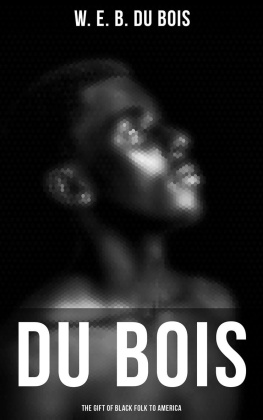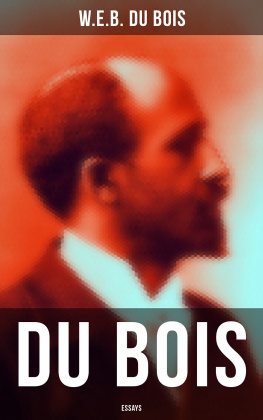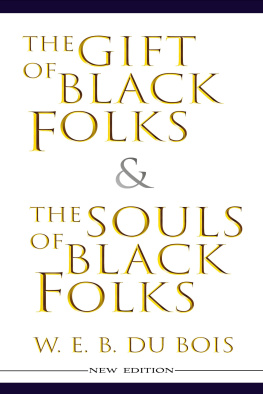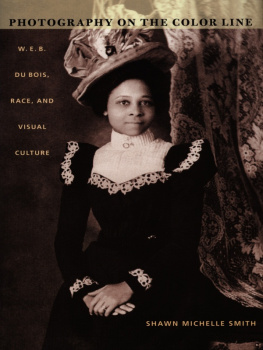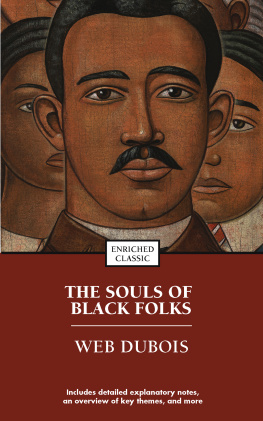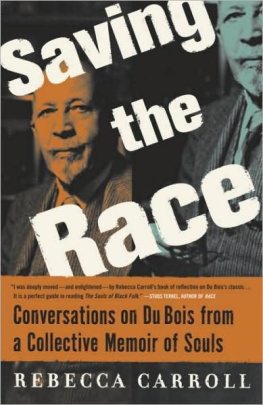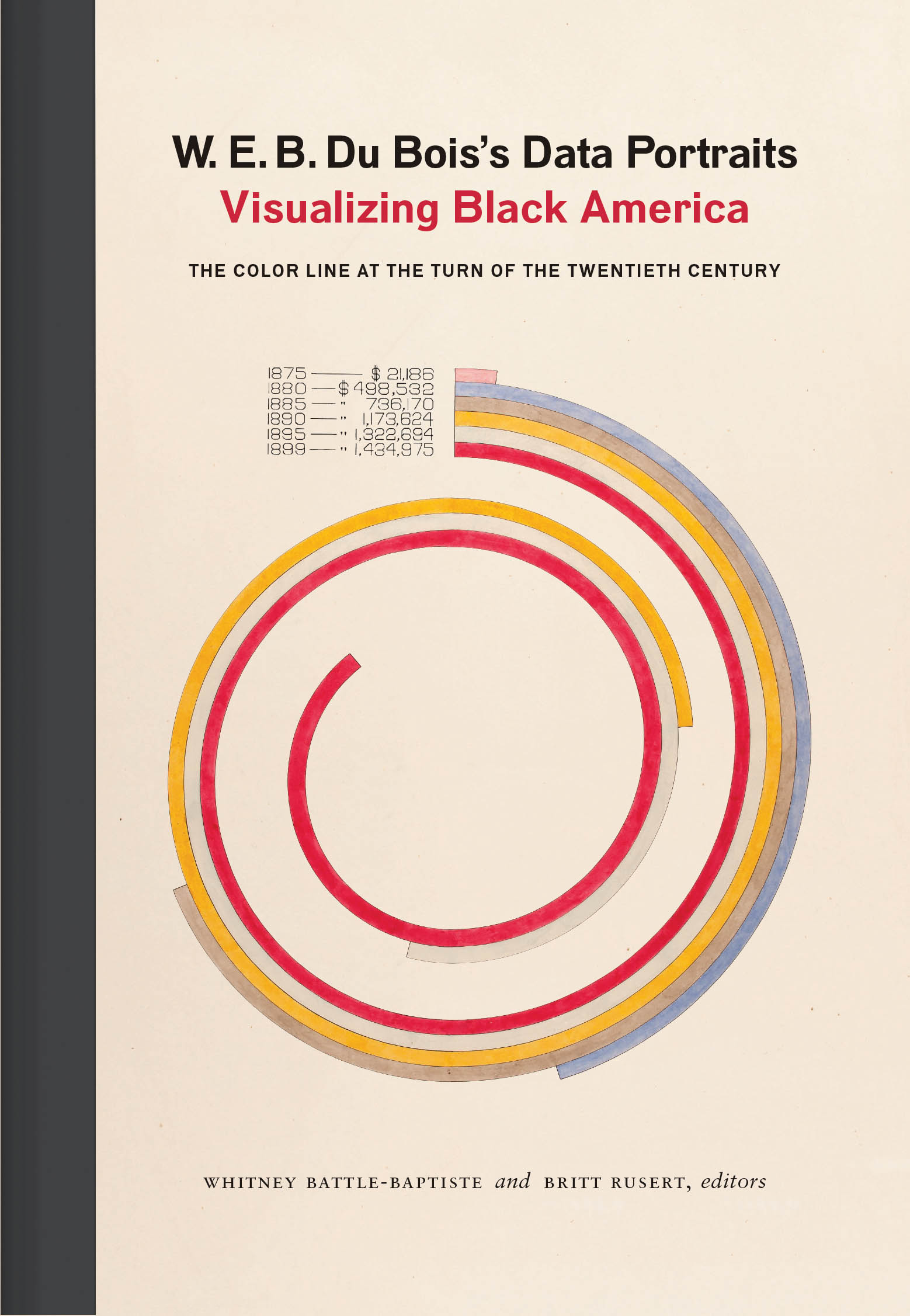

The problem of the twentieth century is the problem of the color-line.
W. E. B. DU BOIS

Published by Princeton Architectural Press
A MCEVOY GROUP COMPANY
202 Warren Street, Hudson, NY 12534
www.papress.com
2018 The W. E. B. Du Bois Center at the University of Massachusetts Amherst
All rights reserved. Printed in China.
21 20 19 18 4 3 2 1 First edition
ISBN 978-1-61689-706-2 (alk. paper)
ISBN 978-1-61689-777-2 (epub, mobi)
Image credits:
: W. E. B. Du Bois Papers (MS 312). Special Collections and University Archives, University of Massachusetts Amherst Libraries.
: Reproduction by permission of the Buffalo & Erie County Public Library, Buffalo, New York.
All other images are reprinted courtesy of the Library of Congress, Prints & Photographs Division.
Princeton Architectural Press is a leading publisher in architecture, design, photography, landscape, and visual culture. We create fine books and stationery of unsurpassed quality and production values. With more than one thousand titles published, we find design everywhere and in the most unlikely places.
No part of this book may be used or reproduced in any manner without written permission from the publisher, except in the context of reviews. Every reasonable attempt has been made to identify owners of copyright. Errors or omissions will be corrected in subsequent editions.
Editors: Nolan Boomer and Nina Pick Designer: Benjamin English
Special thanks to: Paula Baver, Janet Behning, Abby Bussel, Jan Cigliano Hartman, Susan Hershberg, Kristen Hewitt, Lia Hunt, Valerie Kamen, Jennifer Lippert, Sara McKay, Parker Menzimer, Eliana Miller, Wes Seeley, Rob Shaeffer, Sara Stemen, Marisa Tesoro, Paul Wagner, and Joseph Weston of Princeton Architectural Press
Kevin C. Lippert, publisher
Library of Congress Cataloging-in-Publication Data is available from the publisher upon request.
Introduction
Whitney Battle-Baptiste and Britt Rusert
I n his little-known speculative fiction The Princess Steel (ca. 190810), scholar, writer, and civil rights leader W. E. B. Du Bois weaves a tale about a black sociologist who stages a magnificent experiment on the top floor of a Manhattan skyscraper overlooking Broadway. At the center of this short story stands a megascope, a fictive technology that looks like a giant trumpet, laced with silken cords like coiled electric wire, and equipped with handles, eyepieces, and earpieces. When hooked up to the megascope, users are able to view the Great Near, Du Boiss term for the always present but usually invisible structures of colonialism and racial capitalism that shape the organization of society. The vision produced by the megascopea fantastical feudal allegory of primitive accumulation centered on an epic battle between two knights for possession of an African princess whose hair is made of steelis generated in part by data contained in a massive set of volumes lining
In a story populated by mysterious scientists, annoying lovebirds, towering skyscrapers, battling knights, glimmering treasure, and a regal princess, its easy to miss that Du Boiss Silent Brotherhood likely refers to an actually existing school of black sociology in the US South at the turn of the century, headed by Du Bois himself at Atlanta University. Furthermore, here at the beginning of his pulpy short fiction, Du Bois offers a narrative of what we would today call data visualization, the rendering of information in a visual format to help communicate data while also generating new patterns and knowledge through the act of visualization itself.
The visual projection of data in Du Boiss sci-fi laboratory would be simply an interesting textual detail were it not for the fact that Du Bois himself had in 1900 contributed approximately sixty data visualizations, or infographics, to an exhibit at the Exposition Universelle in Paris dedicated to the progress made by African Americans since Emancipation. This Exposition des Ngres dAmrique was organized by Thomas Junius Calloway, a lawyer, educator, Fisk University graduate, and editor of the Colored American newspaper in Washington, DC, who, with the endorsement and assistance of Booker T. Washington, successfully petitioned the United States government to include, as part of its showcasing of its industrial and imperial prowess as well as its commitment to social reform, an exhibit dedicated to African American life. The American Negro Exhibit featured many contributions by students and faculty at the Tuskegee Institute, Howard University, the Hampton Institute, and other black colleges and industrial schools. The installations that comprised the American Negro Exhibit were meant to educate patrons about the forms of education and uplift occurring at black institutions and in African American communities across the US South. The exhibit featured an eclectic set of objects, images, and texts, including framed photographic portraits of prominent African American leaders and politicians; tools, harnesses, and other agricultural products from black industrial schools; a bronze statuette of Frederick Douglass; and an on-site collection of over two hundred and fifty publications authored by African Americans and compiled by Daniel Alexander Payne Murray, a black intellectual, bibliographer, and librarian at the Library of Congress.
Calloway reached out to W. E. B. Du Bois, his former classmate and friend from Fisk, in the hopes that he would be willing to contribute a social study about African American life to the exhibit. Du Bois used this invitation as an opportunity to contribute two unique sets of data visualizations to the American Negro Exhibit. Heading a team composed of students and alumni from Atlanta University, Du Bois created a collection of graphs, charts, maps, and tables that were generated from a mix of existing records and empirical data that had been collected at Atlanta University by Du Boiss sociological laboratory. Eugene F. Provenzo Jr., author of W. E. B. Du Boiss Exhibit of American Negroes, notes that most of the information for the charts was drawn from sources such as the United States Census, the Atlanta University Reports, and various governmental reports that had been compiled by Du Bois for groups such as the United States Bureau of Labor.

Exposition des Ngres dAmrique, Paris Exposition, 1900.
In addition to holding up Atlanta Universitys home state as representative of black populations across the country, Du Bois and his team were interested in establishing the Black Souths place within and claim to global modernity.
The second set of infographics prepared by Du Bois and his team at Atlanta University was more national and global in scope. Titled A Series of Statistical Charts Illustrating the Condition of the Descendants of Former African Slaves Now in Residence in the United States of America, this set included renderings of national employment and education statistics, the distribution of black populations across the nation, a comparison of literacy rates in the United States relative to other countries, and other striking visualizations. Despite the existence of two separately titled series, important points of cross-reference and connection are visible across both sets of images. For example, the map depicting routes of the African slave trade (see ), which served as the lead image for the Georgia study, situates Georgia (represented by a star) at the center of the maps diasporic cartography, bringing the Georgia study into the orbit of the global scope of the second series while also maintaining its more local orientation.
Next page


